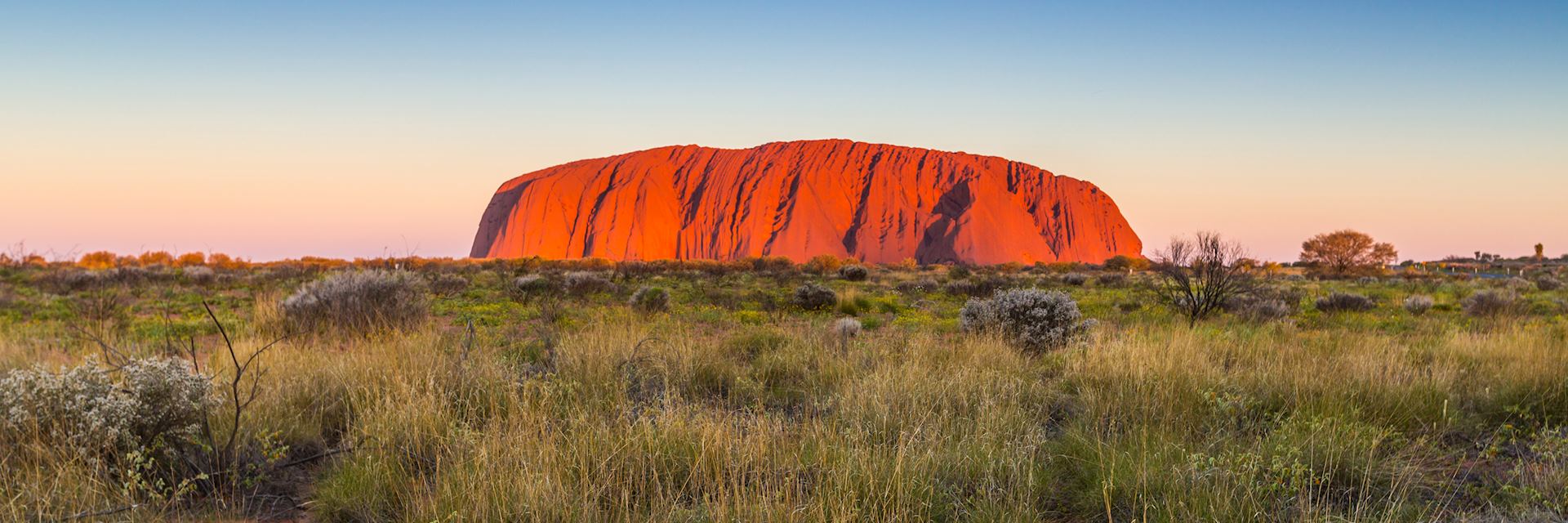
Embarking on a Spiritual Odyssey
Nestled in the heart of Australia, Uluru-Kata Tjuta National Park stands as a testament to the profound spiritual connection between the land and its Aboriginal custodians. This article invites you to embark on a captivating journey through this sacred site, where stunning red rock formations whisper tales of ancient wisdom.
Uluru: The Sacred Monolith
Uluru, an iconic sandstone monolith, dominates the landscape with an aura of reverence. This section delves into the cultural significance of Uluru to the Anangu people, the traditional owners of the land. The sacred stories etched into its contours echo the spiritual teachings passed down through generations, creating a profound sense of connection to the Earth.
Kata Tjuta: The Many Heads
Venturing beyond Uluru, we encounter the majestic Kata Tjuta, a series of domed rock formations that translate to “Many Heads.” This paragraph explores the geological marvel of Kata Tjuta, highlighting the spiritual significance it holds for the Anangu. The interplay of light and shadow on these ochre-colored rocks creates a breathtaking spectacle, inviting visitors into a sacred realm.
Treading the Cultural Landscape
As visitors tread the red earth of Uluru-Kata Tjuta National Park, they embark on a journey through a living cultural landscape. This section sheds light on the guided walks offered by the Anangu guides, providing insights into the land’s cultural and natural significance. Each step becomes a communion with ancient traditions and a deeper understanding of the interconnectedness between people and place.
Stargazing: Celestial Stories Above the Red Earth
As the sun sets over Uluru, a celestial display unfolds in the vast outback sky. This paragraph explores the allure of stargazing in the national park, where the brilliance of the Southern Hemisphere’s stars unveils a celestial tapestry. The Anangu people, seasoned astronomers, share their celestial stories, adding another layer to the spiritual experience beneath the Southern Cross.
Uluru’s Changing Colors: A Daytime Spectacle
Uluru’s mesmerizing transformation begins at sunrise, a spectacle that paints the monolith in hues of red, orange, and purple. This section captures the magic of the changing colors, illustrating how the play of light on the rock surface mirrors the ever-shifting emotions and moods of the spiritual landscape. Witnessing this phenomenon becomes a moment of awe and introspection.
Uluru-Kata Tjuta: A UNESCO World Heritage Site
The recognition of Uluru-Kata Tjuta National Park as a UNESCO World Heritage Site underscores its global significance. This paragraph delves into the criteria that earned this status, emphasizing the park’s cultural and natural values. The UNESCO designation reflects the universal importance of preserving and celebrating this sacred Aboriginal site.
Conservation Efforts: Guardians of the Sacred Lands
Preserving the sanctity of Uluru-Kata Tjuta National Park requires dedicated conservation efforts. This section explores initiatives undertaken to protect the cultural and natural heritage of the park. From sustainable tourism practices to environmental stewardship, these efforts ensure that future generations can continue to experience the spiritual essence of this sacred land.
Uluru-Kata Tjuta National Park: Sacred Aboriginal Site with Stunning Red Rock Formations
To embark on your own spiritual odyssey and explore the mesmerizing landscapes of Uluru-Kata Tjuta National Park, visit rozelmarine.com. Here, you’ll find insights, travel tips, and a guide to make the most of your journey through this sacred Aboriginal site with its stunning red rock formations.
Respecting the Anangu Wisdom
In conclusion, the journey through Uluru-Kata Tjuta National Park is not merely a physical exploration but a spiritual odyssey. It’s an invitation to connect with the ancient wisdom of the Anangu people, to witness the enduring beauty of the red rocks, and to carry the essence of this sacred Aboriginal site in one’s heart.